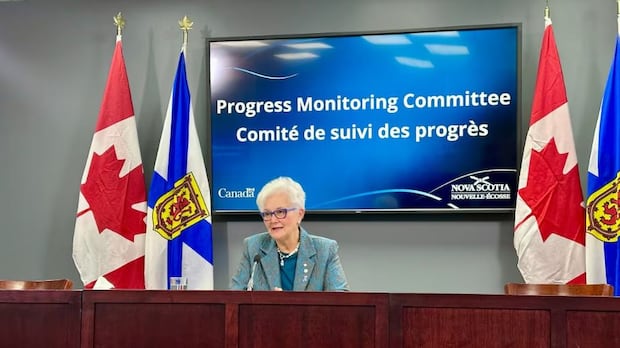Some parents questioning how N.S. school lunch program will cater to all dietary needs

The last time Greg Hayward sent his six-year-old son Alexander to a birthday party, he prepared a gluten-free hotdog and cupcake in advance so his son wouldn’t feel left out.
Alexander has celiac disease and gluten makes him sick, so his parents are vigilant about what he eats, even making sure to avoid cross-contamination in their own kitchen. This means they have to prepare his school lunch every day, and he can only safely eat a select few packaged items from his school cafeteria in New Glasgow, N.S.
When Nova Scotia’s new school lunch program was announced this spring, the Hayward family was hopeful that Alexander would be able to participate when the program rolls out in elementary schools across the province this October.
But they also worry the program won’t be safe for him, and other children with various dietary, health and cultural needs.
“I think it would be missing its target if that was the case,” Hayward said. “Being able to access food with their peers, just go get in line for the cafeteria … getting served lunch with everybody else is important.”
Education Minister Becky Druhan said when the lunch program begins in 256 elementary schools, it will include two meals per day, one of which will be vegetarian. She said the goal is to be inclusive, but she shared few details about how different dietary requirements will be met.
“Moving forward, it’s going to be really important and necessary to have community feedback about what’s important in future iterations of the menu,” Druhan said. “But right from the start, families will have access to the list of ingredients for all of the meals that are offered, so they’re able to make decisions that are right for them.”
Survey shows excitement, questions
In June, the Department of Education opened a survey for parents, asking their thoughts on the program, and allowing public anonymous comments. More than 9,000 comments were posted, many of which focused on the need for healthy and inclusive meals.
“What is the plan for different dietary restrictions, fussy eaters and different cultural food preferences,” said one comment. “To be inclusive and respectful of every child’s needs, restrictions, beliefs and culture.”
The program will use a “pay-what-you-can” model, and though few details have been released about how this will work, many parent comments praised the program for ensuring no child will go hungry at school.
When it comes to religious and cultural needs, a vegetarian meal could suffice, but the Islamic Association of Nova Scotia wants it to go farther.
“When we go to events … often the vegetarian option is something that’s so bland and plain that people bring their own food from home,” said Emad Aziz, the association’s community officer. “And the whole purpose of the school program is to support struggling families. So let’s make it really helpful for them by giving them options that work for them and for their kids.”
Aziz said the program has been well received, but many Muslim parents have unanswered questions about what types of food will be available, if it will be halal, and if their culture will be represented in the cuisine.
“Let’s celebrate our diverse classrooms by offering options that can cater to all communities so we can celebrate who we are,” he said.
Individual schools could better adapt
Schools may be better suited to adapt to the dietary needs of their students than asking the entire province to provide meals for every type of diet, said Lindsay Corbin, the co-ordinator of the Nova Scotia chapter of the Coalition for Healthy School Food with Nourish Nova Scotia.
“I think that there’s going to be a need for local-level adaptations and connections between families and food service providers and administration to make sure that the food that’s being served in that individual school is meeting the needs of those students,” Corbin said.
Corbin said she knows of success stories where schools have tailored meals to the needs of specific students.
When asked if individual schools will have the ability to create specific meals for their students, Druhan said with the initial rollout the two daily meals will be the same at every school across the province.
Calls for proposals from restaurants and businesses that want to serve school lunches closed earlier this month. The Education Department won’t yet say how many proposals were received and when the providers will be announced.
“We’re doing the work to build the program,” Druhan said. “We know that people are eager to have information and certainly it will be available to them so that they’re ready to go … when the time comes.”




